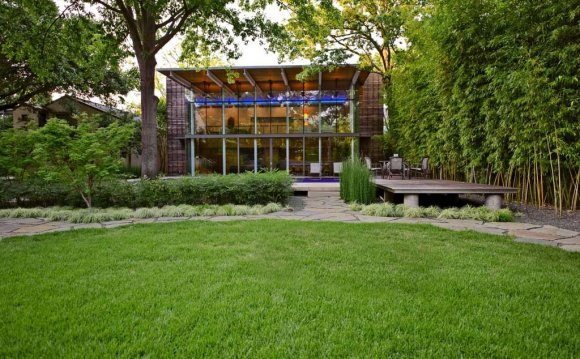
A "classic of modern horticulture, unsurpassed in the United States..." -The Magazine Antiques
Daniel Urban Kiley (1912-2004), a leading figure in modern American landscape architecture, was born in 1912 in the Roxbury Highlands section of Boston. In 1932, Kiley began an apprenticeship with Warren Manning (1860-1938), one of the most important figures in American landscape architecture and in 1936 he entered Harvard University’s landscape architecture program where he developed an interest in European modernism and its applications to landscape architecture. He left Harvard in 1938 without completing a degree.
From 1943 to 1945, Kiley served with Eero Saarinen in the Office of Strategic Services (OSS); following the war, he received the assignment to design the courtroom for the Nuremberg war trials. While in Europe, Kiley had opportunities to experience historic landscapes and gardens, and was particularly influenced by the grand, formal tradition of designers such as André Le Nôtre (1613-1700), whose work included the park at the palace of Versailles. Kiley’s work has been compared with that of Ludwig Mies van der Rohe and the DeStijl School of Art and Architecture, notably the work of Piet Mondrian. Kiley’s landscapes are highly structured geometric compositions that use three-dimensional natural elements as spatial enclosures.
Kiley, along with Eero Saarinen and others, was one of the team whose design was chosen in 1948 for the Jefferson National Expansion Memorial (St. Louis Gateway Arch). Other notable projects include: the Ford Foundation's headquarters and Lincoln Center in Manhattan; and I. M. Pei's East Building, inside and out, for the National Gallery of Art in Washington. Kiley is a recipient of the Arnold W. Brunner Prize in Architecture (1995) and the National Medal of Arts (1997).
Kiley and Miller House & Garden
While the interiors of Miller House afforded Girard an opportunity to enrich and personalize the house for the Millers, the garden was for Dan Kiley a canvas on which to expand Saarinen’s architectural vision to the landscape. He and Harvard contemporaries Garrett Eckbo and James Rose rejected the tenets of Beaux Arts design that then formed the core of the landscape architecture curriculum and went on to publish their own manifesto of modernism. To them, the field’s established catalogue of historical references and hierarchical spatial concepts reflected social conditions and intellectual assumptions that simply were no longer valid in twentieth-century America. Accordingly, Kiley’s garden—like Saarinen’s house—relies on a clear and strong geometric order, but without conventional symmetry, reliance on fixed points of reference, or paths of circulation that constrain the viewer’s experience. It is largely concerned with shaping spaces, composing relationships of solids and voids, and manipulating the interplay of volumes rather than with creating specific garden views or with orchestrating complex floral combinations or bloom sequences.
The landscape’s grandest feature is an allée of honey locust trees that defines an axis along the west side of the house, extending almost to the limits of the property. With finely textured buff-colored crushed stone beneath the entire allée, the dark honey locusts stand out in sharp contrast, their lacy foliage gently filtering the sunlight. Subsequent to the allée’s construction, it received a sculptural terminus at each end: a bas relief by Jacques Lipschitz at the south and a reclining female figure by Henry Moore at the north; both were later sold at auction as part of the process of estate settlement.















